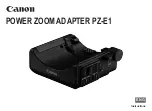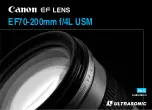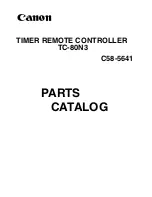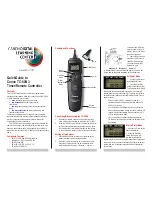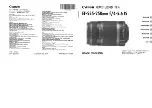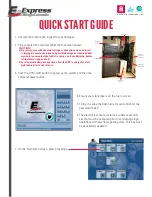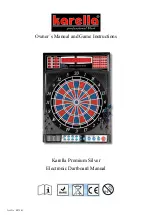
Hans Turck GmbH & Co. KG | Witzlebenstraße 7, 45472 Mülheim an der Ruhr, Germany | Tel. +49 208 4952-0 | Fax +49 208 4952-264 | [email protected] | www.turck.com
© Hans Turck GmbH & Co. KG | D102296 2021-06
RU…U-M…AP8X…
Flow charts – Setting
3
Button/U
B
> 2…7 s
Measure and
save
Single
switching
point
LED GN
2 Hz
Fail
LED GN/YE
1.5 s, 5 Hz
OK
LED GN
1.5 s, 5 Hz
Normal
operation
4
Button/U
B
> 2…7 s
Measure and
save for SP1 for
far distance
Window
function
LED GN
2 Hz
Fail
LED GN/YE
1.5 s, 5 Hz
OK
LED GN
1.5 s, 5 Hz
Normal
operation
Button/U
B
> 7…12 s
Measure and
save for SP2 for
close distance
LED YE
2 Hz
Normal
operation
OK
OK
LED GN
1.5 s, 5 Hz
LED GN
1.5 s, 5 Hz
5
Button/U
B
> 12…17 s
Invert
Invert logic
LED GN/YE
2 Hz
NC
LED YE
1.5 s, 5 Hz
NO
LED GN
1.5 s, 5 Hz
Normal
operation
Technical Data
Technical features
RU40…-M18…
RU70…-M18…
RU100…-M18…
Blind zone S
min
2.5 cm
10 cm
15 cm
Coverage (RU…-U)
40 cm
70 cm
100 cm
Max. teach range of reflector
position (RU…L-…)
39 cm
68 cm
98 cm
Resolution
0.5 mm
1 mm
1 mm
Minimum size switching range
5 mm
10 mm
10 mm
Operating voltage
15…30 VDC
15…30 VDC
15…30 VDC
Rated operational current
≤ 150 mA
≤ 150 mA
≤ 150 mA
No-load current
≤ 50 mA
≤ 50 mA
≤ 50 mA
MTBF value acc. to SN29500
195 years
195 years
195 years
Operating temperature
-25…+70 °C
-25…+70 °C
-25…+70 °C
Storage temperature
-40…+80°C
-40…+80°C
-40…+80°C
Weight
39 g
39 g
39 g
Switching hysteresis
5 mm
10 mm
10 mm
Switching frequency
7 Hz
5.6 Hz
8 Hz
Approvals
CE, cULus
CE, cULus
CE, cULus
UL Conditions: amb. temp. 85 °C, use same supply for all circuits.
Factory Settings
Technical features
RU40…-M18…
RU70…-M18…
RU100…-M18…
Output behavior
NO, PNP
NO, PNP
NO, PNP
Switching point
40 cm (end of coverage)
70 cm (end of coverage)
100 cm (end of coverage)
DE
Kurzbetriebsanleitung
Einstellen
Die Geräte lassen sich wie folgt teachen:
■
Teach-Adapter: Taster drücken.
■
Manuelles Brücken (kurzschließen): Pin 1 (BN) mit Pin 2
(WH) kurzschließen.
Der Teach-Adapter VB2-SP1 gehört nicht zum Liefer-
umfang. Zum Teachen wird der Adapter zwischen Sensor
und Anschlusskabel angeschlossen. Nach erfolgreichem
Teach-Vorgang wechseln die Geräte automatisch in den
Normalbetrieb.
Einzelschaltpunkt einstellen (Abb. 3)
➤
Objekt für Schaltpunkt positionieren.
➤
2…7 s teachen.
➥
Wenn der Schaltpunkt erfolgreich eingelernt wurde, blinkt
die LED grün mit einer Frequenz von 2 Hz. Im Fehlerfall
blinkt die LED grün/gelb mit einer Frequenz von 5 Hz.
Fensterfunktion einstellen (Abb. 4)
➤
Objekt für fernen Schaltpunkt positionieren.
➤
2…7 s teachen.
➥
Wenn der Schaltpunkt erfolgreich eingelernt wurde, blinkt
die LED grün mit einer Frequenz von 2 Hz. Im Fehlerfall
blinkt die LED grün/gelb mit einer Frequenz von 5 Hz.
➤
Objekt für nahen Schaltpunkt positionieren.
➤
7…12 s teachen.
➥
Wenn der Schaltpunkt erfolgreich eingelernt wurde, blinkt
die LED grün mit einer Frequenz von 2 Hz. Im Fehlerfall
blinkt die LED grün/gelb mit einer Frequenz von 5 Hz.
Ausgangsfunktion invertieren (Öffner/Schließer) (Abb. 5)
➤
12…17 s teachen.
➥
Wenn das Gerät erfolgreich als Schließer eingestellt wur-
de, blinkt die LED grün mit einer Frequenz von 5 Hz.
➥
Wenn das Gerät erfolgreich als Öffner eingestellt wurde,
blinkt die LED gelb mit einer Frequenz von 5 Hz.
Teach-Vorgang abbrechen
➤
Mindestens 17 s teachen.
➥
Das Gerät kehrt in den Normalbetrieb zurück.
Reparieren
Das Gerät ist nicht zur Reparatur durch den Benutzer vor-
gesehen. Sollte das Gerät defekt sein, nehmen Sie es außer
Betrieb. Bei Rücksendung an Turck beachten Sie unsere
Rücknahmebedingungen.
Entsorgen
Die Geräte müssen fachgerecht entsorgt werden und
gehören nicht in den normalen Hausmüll.
EN
Quick Start Guide
Canceling the teach-in process
➤
Teach-in for at least 17 s.
➥
The device will return to normal operation.
Repair
The device is not intended for repair by the user. The device
must be decommissioned if it is faulty. Observe our return
acceptance conditions when returning the device to Turck.
Disposal
The devices must be disposed of correctly and must
not be included in general household garbage.
Setting
The device teach-in takes place as follows:
■
Teach adapter: Press the button.
■
Manual bridging (short-circuit): Short-circuit pin 1 (BN)
with pin 2 (WH).
The VB2-SP1 teach adapter is not included in the scope of
delivery. The adapter is connected between the sensor and
connection cable for teaching-in. Once the teach-in process
has been successfully completed, the devices automatically
switch to normal operation.
Setting a single switching point (fig. 3)
➤
Position the object for the switching point accordingly.
➤
Teach-in for 2…7 s.
➥
When the switching point has been successfully taught,
the LED will flash green at a frequency of 2 Hz. In the
event of an error, the LED will flash green/yellow at a
frequency of 5 Hz.
Setting the window function (fig. 4)
➤
Position the object for the far switching point.
➤
Teach-in for 2…7 s.
➥
When the switching point has been successfully taught,
the LED will flash green at a frequency of 2 Hz. In the
event of an error, the LED will flash green/yellow at a
frequency of 5 Hz.
➤
Position the object for the near switching point.
➤
Teach-in for 7…12 s.
➥
When the switching point has been successfully taught,
the LED will flash green at a frequency of 2 Hz. In the
event of an error, the LED will flash green/yellow at a
frequency of 5 Hz.
Inverting the output function (NC contact/NO contact)
(fig. 5)
➤
Teach-in for 12…17 s.
➥
When the device has been successfully set as an NO con-
tact, the LED will flash green at a frequency of 5 Hz.
➥
When the device has been successfully set as an NC con-
tact, the LED will flash yellow at a frequency of 5 Hz.







